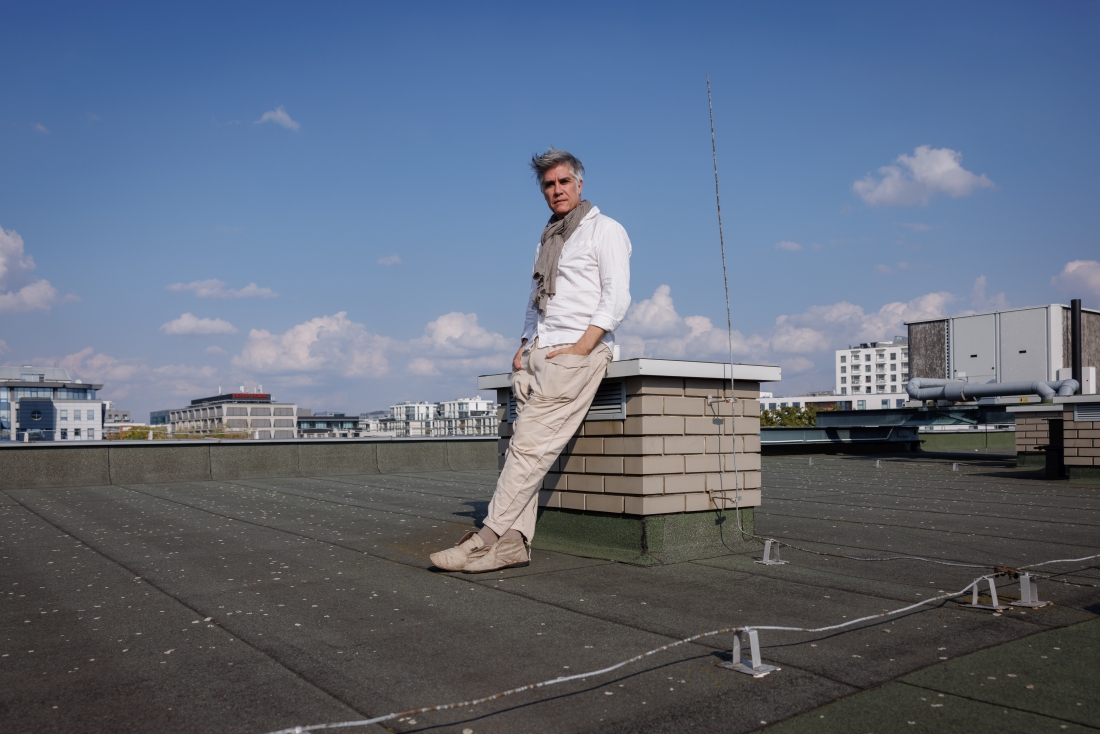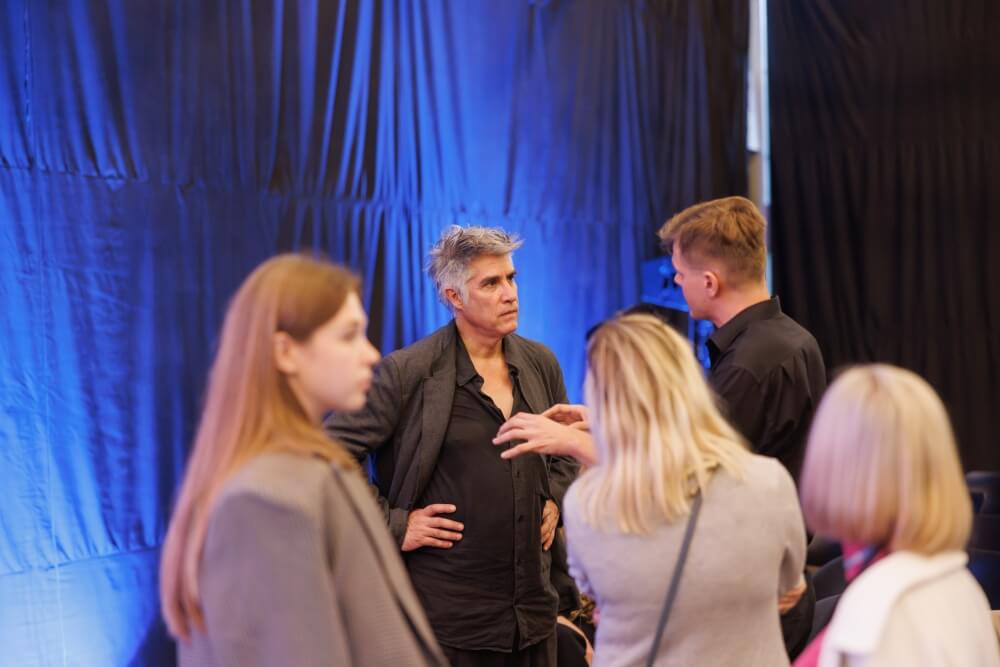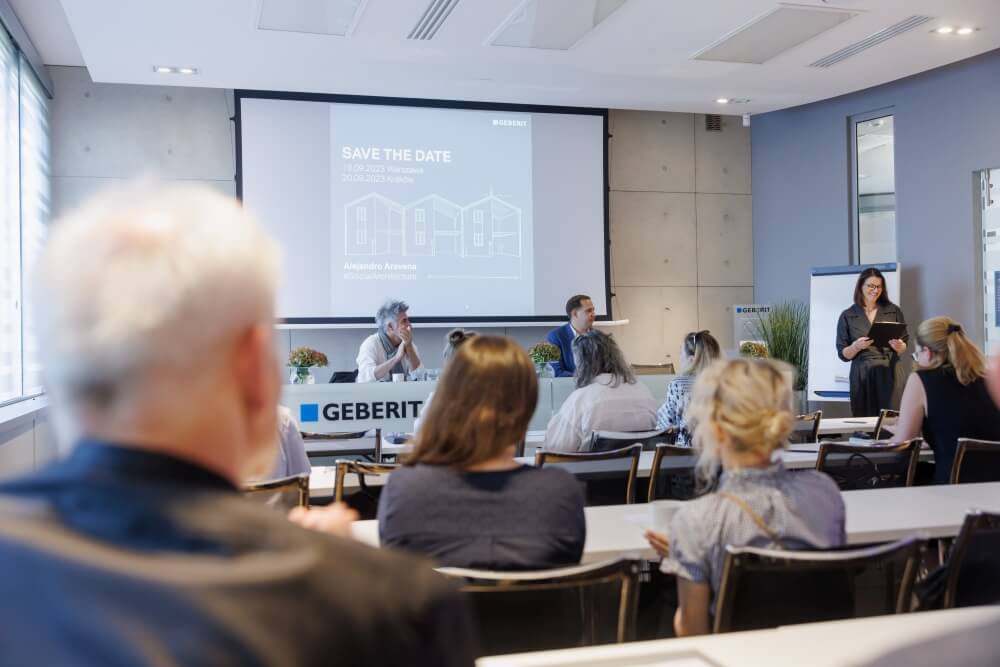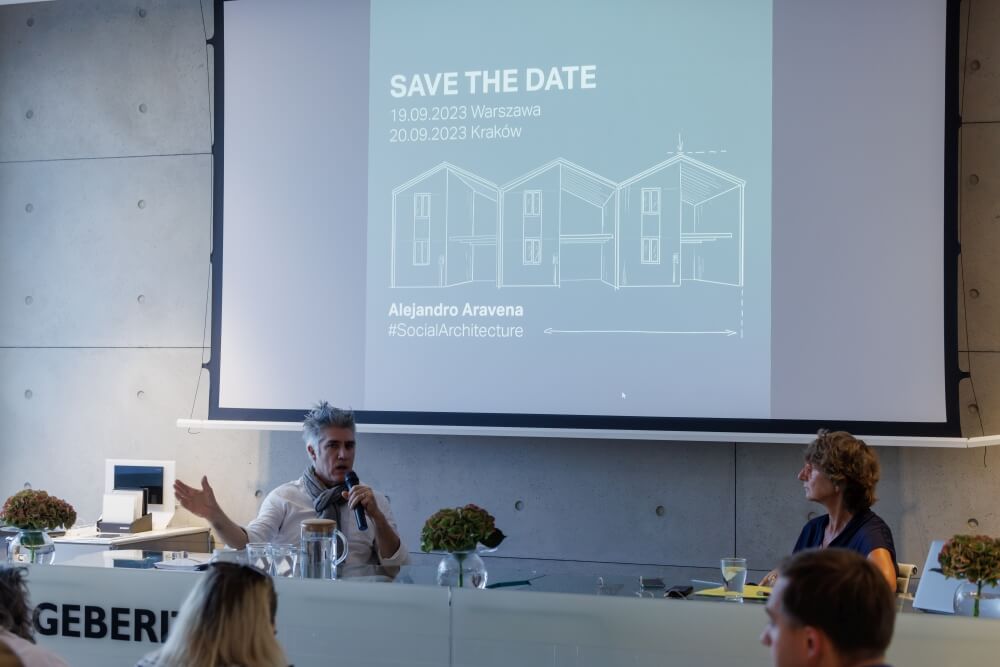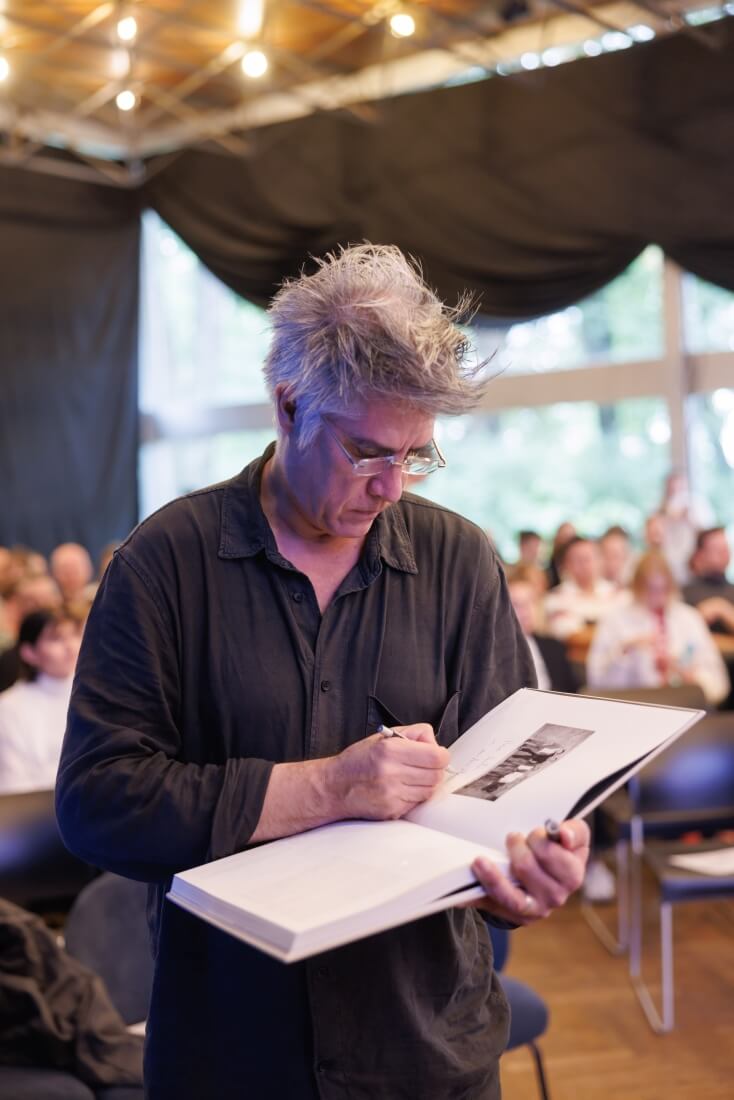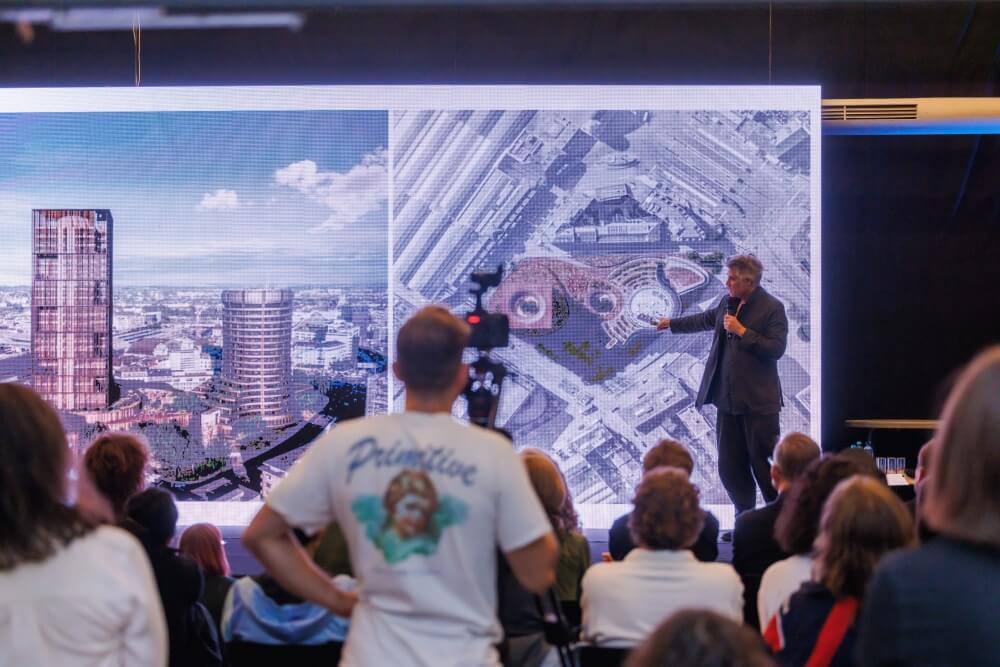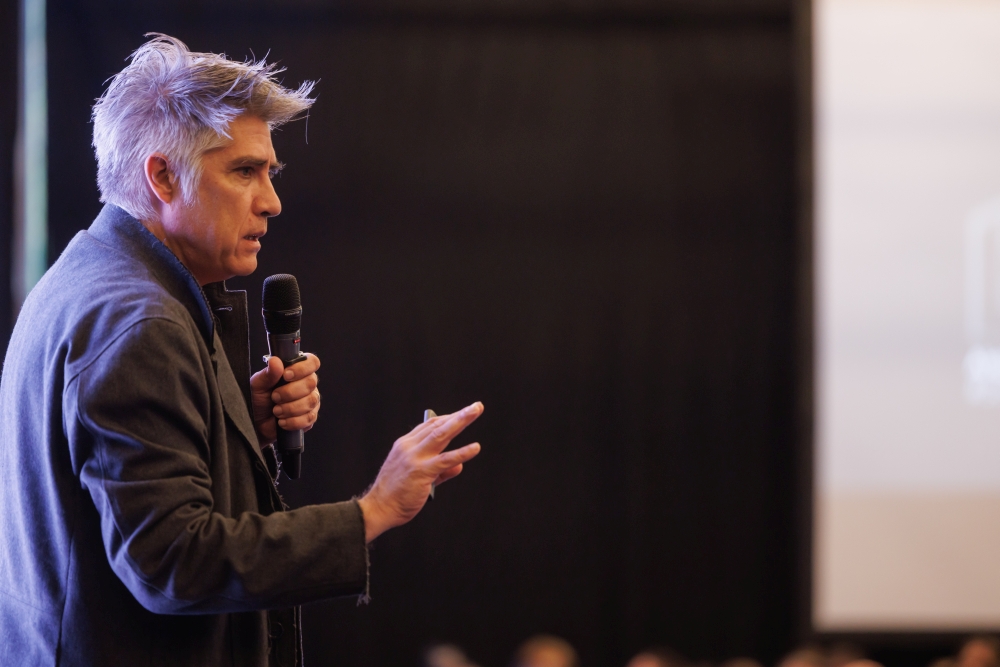Alejandro Aravena, a prominent architect, winner of the Pritzker Prize and chairman of the jury of this prestigious competition, finalist of the Mies van der Rohe Award – theoretician and practitioner of socially engaged architecture – visited Poland at the invitation of Geberit. The Chilean architect gave a lecture in Warsaw and Krakow entitled ‘Alejandro Aravena and architecture that puts people and places that need it most first’ and met with media representatives. Aravena’s first public appearance in Poland was a true celebration of architecture
Organised at Geberit’s headquarters at 1 Postępu Street, a press conference held on 18 September gave media representatives the opportunity to meet Alejandro Aravena in person. The meeting, attended by Karolis Bacevičius, Managing Director of Geberit Sp. z o.o., and Justyna Zborowska, Advertising and PR Manager, was chaired by Bogna Świątkowska, journalist and culture promoter, President of the Bęc Zmiana New Culture Foundation
Elemental, or first things first
The architect introduced the journalists to the mission of the ELEMENTAL studio, founded by him in 2001, where projects of a social nature are created. The themes that the studio addresses are located at the intersection of architecture, economics and politics. The projects are preceded by community consultations, about which the architect spoke with commitment. ‘During these types of gatherings,’ Aravena reported, ‘the architect, with his attitude, cannot communicate to the future inhabitants of a social building: “I know everything, you know nothing”, nor be guided by sympathy or submit to the dictates of the community. Instead, he or she should learn from the community, find out why it prefers certain solutions over others. And, as Aravena said, “Do something better than what the conditions allow”. The architect revealed to media representatives that he himself finds it a challenge to fight the urge to control the final result, something he also recommends to other architects, because: “In social housing, the process of working on a project is more important than the project itself”
A prize that takes you to the top
Alejandro Aravena, winner of the Pritzker Prize and chairman of the jury of this competition since 2020, was asked by the moderator of the meeting, Bogna Świątkowska, what this honourable award means to the awardees. Aravena emphasised the symbolic significance of the Pritzker Prize and the sense of mission that the honoured have. He explained what drove the judges when they awarded the prize to this year’s winner Sir David Alan Chipperfield. At the heart of his approach to design, like Aravena’s, is a responsibility for the impact that architecture has on society and the environment. According to Alejandro Aravena, an architect must be able to find the right tools to meet the expectations of the community for which he or she is designing and respond to its needs. Smart, sustainable architecture is the answer. It can also be the answer by doing nothing. “Sometimes it is better to do nothing”, says Aravena – for Aravena asserts. Among the journalists’ questions, the subject of the education of young architects came up, in the context of the teaching activities of Aravena, who was a professor at Harvard University from 2000 to 2005. To his younger colleagues, the mentor advises them to ask questions before they start creating an object. For himself, the most important thing about his work is the meetings, the conversations, the exchange of ideas
Sensitivity to contemporary issues
Alejandro Aravena is impossible to pigeonhole. Described mainly as a specialist in social housing, building in areas affected by natural disasters, creating participatory projects, architecture involved in solving political crises, Aravena also accepts commissions reserved for star architects. Asked at the conference why he engages in these types of projects, he replied that he does so because of the other difficult tasks involved, such as those related to global warming. The Chilean is rightly called an architect-activist. When there is a problem to be solved and something good can be done for people or for the planet, the architect picks up the gauntlet thrown down
In the world of architecture
In the next stage of Alejandro Aravena’s visit to Poland, the architect was a special guest at events organised by Geberit in Warsaw and Krakow
on 19 September, an expert conference was held at the SARP exhibition and conference pavilion in Warsaw, during which the architect gave a lecture entitled ‘Alejandro Aravena and architecture that puts people and places that need it most first’. The lecture was preceded by an industry meeting with Polish and foreign architects and a Q&A session. Speakers included: Brda Foundation, CO-HATY, Habitat for Humanity, PORT Architects, Spolka, MAK, Marlena Wolnik, Kuba Snopek, Pracownia Xystudio and Anton Kolomieitsev with his team
The Krakow lecture took place on 20 September at the Manggha Museum of Japanese Art and Technology. The official presentations were accompanied by meetings and talks behind the scenes. Aravena’s first public presentations in Poland were a revelation on a national scale and a true celebration of architecture
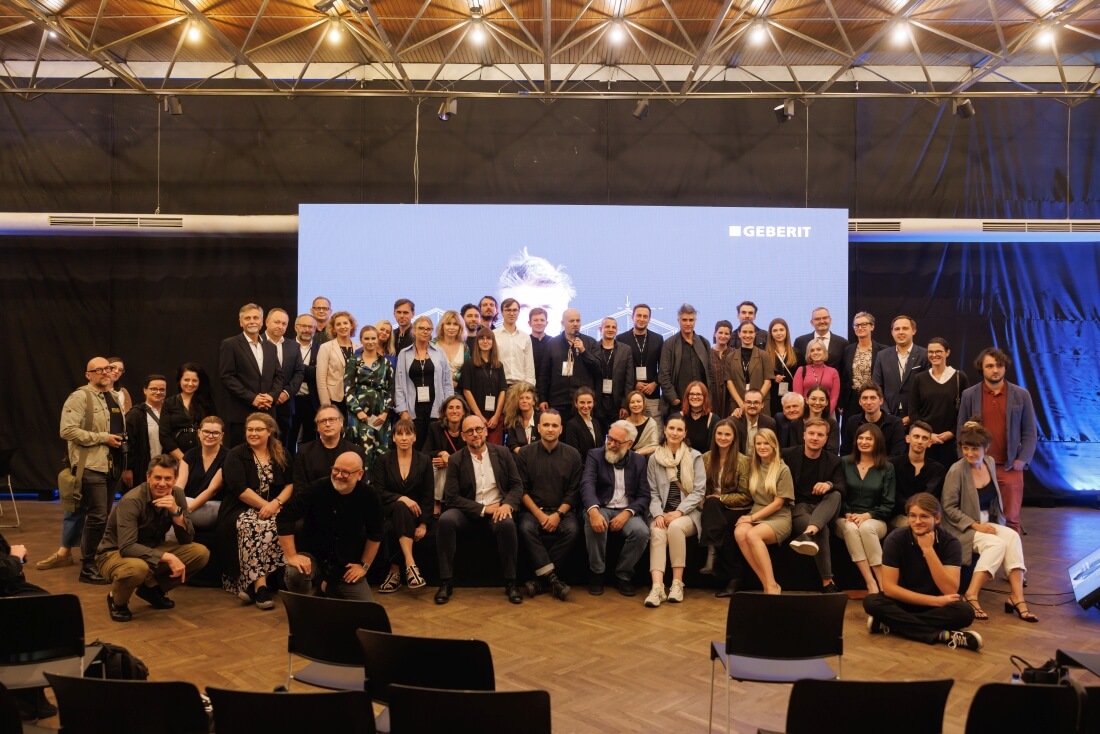
Aravena: It is important to ask questions, not look for answers
During the lectures, the special guest spoke openly and accessibly about his goals, his working methods, his successes, but also his failures. For Aravena, making an iconic project is not an end in itself. The social benefit is the most important. The Chilean considers the most important stage of a design team to be asking questions rather than seeking answers. When inquiring, architects should focus on safety issues, the ways in which buildings are used and their character. But also on the atmosphere they are meant to create, the emotions they are meant to evoke. According to Aravena, the more complex the questions, including those outside architecture, the simpler the design that emerges. Focusing on the essential and eliminating the superfluous guarantees the creation of buildings that are timeless – physically and culturally
Structure and inhabitants
When the structure is ready, the whole building can be considered finished. In the final analysis, it is the structure that counts. If the structure is well executed, everything else “will fall into place by itself”, says the architect. The structure is the most important, technically most difficult and most expensive element, Aravena believes. This belief is reflected in his social housing projects, such as Villa Verde Housing in the city of Constitucion and Monterrey Housing. Aravena’s idea is to create high-quality architecture – non-exclusive, accessible to everyone, not just the wealthy part of society. The participation of residents in the process, the agreement with future tenants, is decisive
During the lecture, Alejandro Aravena also revealed a little about his latest project for the headquarters of the Inter-American Development Bank in Buenos Aires, a building not in the city centre, but in a poor neighbourhood. The architects, led by Aravena, faced two challenges: how to ensure that the building was connected to transport nodes and how to ensure security. They designed a bridge building spanning the railway line – a building that is a bridge
Semi-privately
Alejandro Aravena has an excellent understanding of his life’s role and knows how to talk colourfully about the architectural profession. Meeting him, however, allowed participants not only to broaden their knowledge of the distinguished guest’s architectural work, but also to get to know him as a human being and a sensitive artist – open, sociable, full of empathy, sensitive to injustice and social inequality. Find out more at www.geberit.pl
source: press materials
Also read: Architect | Interviews | Urbanism | Interesting facts | whiteMAD on Instagram

